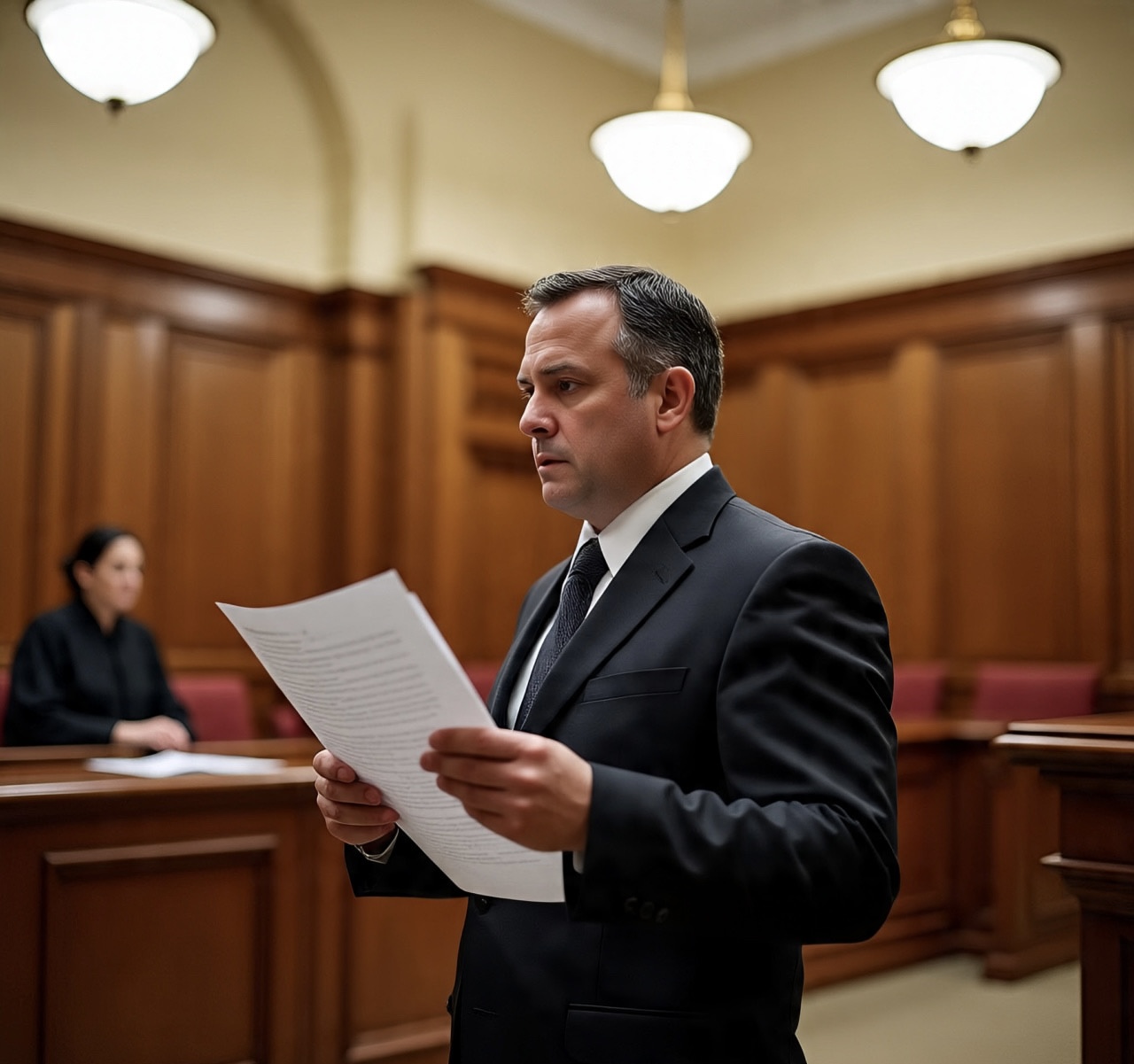Intellectual Property (IP) litigation is complex and can be overwhelming, especially for large technology companies, law firms, inventors, and startups. Whether it’s patent disputes or infringement cases, managing IP assets efficiently is vital to preserving their value. However, IP litigation poses numerous challenges, ranging from the rapid evolution of AI to navigating jurisdictional conflicts. In this post, we will explore the biggest challenges in IP litigation and provide actionable solutions to overcome them. If you’re looking to understand the key challenges of IP litigation you should know, you’re in the right place.
Navigating the Complexity of AI-Driven IP Disputes
As artificial intelligence (AI) continues to transform various industries, its impact on intellectual property (IP) litigation is growing exponentially. AI-generated inventions and works complicate the understanding of ownership and authorship, raising a host of legal questions. The lines between human and machine innovation are increasingly blurred, making it difficult to attribute rights to AI-generated products.
Moreover, AI’s reliance on vast datasets for training introduces the issue of data ownership. Many IP disputes now revolve around the legitimacy of training data and whether using publicly available data to develop AI algorithms infringes upon copyright laws.
Overcoming AI-Related Litigation Challenges
To overcome these challenges, companies must establish clear policies surrounding the ownership of AI-generated IP. This includes outlining ownership rights in AI contracts and ensuring they comply with existing IP laws. Staying ahead of evolving legal standards for AI and IP will also provide companies with a competitive edge in these complex matters.
It’s also essential to consult with technical experts who understand both the AI algorithms and the legal implications. These experts can strengthen litigation strategies by providing critical insights into the technology involved, ensuring that companies present their cases effectively in court.
Managing Cross-Border IP Enforcement
With globalization, IP disputes often transcend borders, leading to complex legal battles involving different legal systems. Jurisdictional issues often arise, and laws vary from country to country. In addition to this, international rulings on IP enforcement are continuously evolving, requiring companies to adapt to new frameworks for enforcement.
Moreover, the rise of digital piracy and counterfeiting in the digital age is a significant concern for IP owners across borders. AI-driven counterfeiting poses a major threat to industries like entertainment, fashion, and technology, as counterfeiters gain access to tools that can reproduce protected goods on a massive scale.
Solutions for Effective Cross-Border Enforcement
To overcome these challenges, companies should use AI-powered enforcement tools that allow for global monitoring of IP infringement. These tools can track the distribution of counterfeit goods across borders, making it easier to take prompt legal action.
Another solution is to build strong legal networks that enable collaboration across jurisdictions. This ensures that companies can address multi-jurisdictional cases quickly and efficiently. Aligning with emerging international frameworks, such as the European Union’s Digital Single Market, will further strengthen enforcement capabilities.
Addressing High-Stakes Patent Disputes in Emerging Technologies
Emerging technologies like semiconductors, 5G, and blockchain are driving an increase in patent disputes. These technologies have global reach, and their commercialization often involves numerous stakeholders. The value of patents related to these technologies has skyrocketed, which is why patent litigation is becoming increasingly high-stakes.
Moreover, as patents for these technologies are often broad, disputes can arise over patent validity, infringement, and licensing terms. The growing importance of patent protections in global markets adds another layer of complexity, as different jurisdictions have differing standards for patentability.
Strategies to Win Complex Patent Litigation
Winning patent litigation in these high-stakes cases requires more than just legal expertise. It’s essential to assemble cross-disciplinary teams that can bring together both technical and legal insights. For example, a team consisting of patent attorneys and industry experts in semiconductors or blockchain technology can provide a well-rounded approach to the case.
Leveraging recent judicial precedents and legislative reforms can also offer a strategic advantage. By staying updated on recent rulings in the relevant industry, legal teams can better anticipate potential challenges and arguments from opposing counsel. Additionally, prioritizing early case assessment and evidence gathering can help build a stronger case for your client.
Adapting to Evolving Legislative and Judicial Landscapes
IP laws are not static; they evolve in response to changes in technology, industry trends, and public policy. As new technologies such as AI, blockchain, and biotechnology advance, legislative changes affect how IP is protected and enforced.
In addition, the rise of specialized IP courts and divisions has led to a more focused approach to IP litigation. These specialized courts offer judges with expertise in IP law, resulting in faster and more informed decisions. However, navigating these new judicial systems requires an understanding of the evolving legal landscape.
Staying Compliant and Competitive
To stay ahead in this ever-changing environment, companies must monitor and interpret legislative reforms in key jurisdictions. This helps ensure that their IP management practices are always in compliance with the latest regulations.
Training legal teams on new compliance requirements will also be essential. Furthermore, engaging with judicial forums and industry groups will provide valuable insights into the latest developments in IP law, ensuring that companies are well-prepared for any challenges ahead.
Overcoming Procedural and Resource Challenges
IP litigation can be a lengthy and expensive process, often involving complex procedures and large volumes of evidence. Managing this evidence—especially technical documentation and expert testimonies—can become overwhelming for legal teams, leading to delays and higher costs.
Additionally, procedural delays are common in IP cases, which can further increase the financial burden on IP owners. Long litigation timelines may also risk the diminishing value of the IP in question, especially when the technology or product is evolving rapidly.
Enhancing Efficiency in IP Litigation
To overcome these procedural challenges, companies should invest in advanced case management and e-discovery tools. These tools help streamline workflows and manage large volumes of data more effectively, enabling teams to stay organized throughout the litigation process.
Outsourcing technical research and expert testimony can also improve efficiency by bringing in specialized knowledge that the in-house team may lack. This approach allows companies to concentrate on the core aspects of their cases while ensuring that technical aspects are covered thoroughly.
Preparing for the Future of IP Litigation
The future of IP litigation will be heavily influenced by ongoing technological advancements. Digital innovations, particularly in AI and blockchain, will continue to create new IP challenges. With more inventions being generated by AI, and new forms of digital counterfeiting emerging, the IP litigation landscape will need to adapt to these developments.
Moreover, automation and AI tools are already beginning to play a role in legal processes, offering ways to increase efficiency and reduce the costs associated with litigation.
Future-Proofing Your IP Litigation Approach
To stay ahead of these changes, companies should invest in continuous legal and technical education. Building resilient IP strategies that can adapt to emerging risks will also be critical for long-term success.
Establishing agile policies to address emerging IP challenges—such as those related to AI or digital counterfeiting—will be essential for future-proofing litigation approaches. By fostering a culture of innovation and proactive IP management, companies can stay competitive and minimize legal risks.
Conclusion
IP litigation will only become more complex as technological innovations continue to disrupt traditional industries. However, by understanding and addressing the challenges outlined in this post, companies can better prepare themselves for the evolving legal landscape. Whether it’s navigating AI-related disputes, managing cross-border enforcement, or overcoming procedural hurdles, staying informed and proactive will be key to success in the world of IP litigation.


